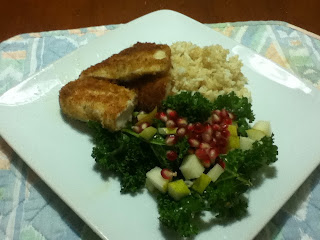This is my last installment of The Diva Diet – or
what I call my post-kidney transplant diet. This one focuses on general, but
important stuff.
As you read through these posts, please remember that this is what works for me. Everyone is different. You may
need to adapt it for yourself and for the meds that you are taking.
 |
| Balanced Diet? |
Also, as
I mentioned in a previous post, I can now add whole wheat and other grains in
my diet. Since I do not have any phosphorus restrictions, I can now experiment
with different grains. When I was in dialysis, I was pretty much limited to
white rice and white bread, which probably created havoc with my digestive
system. Now, I can have quinoa, barley, corn meal, oats (my favorite) and oat
bran.
I still
need to be careful though; immunosuppressants may increase potassium in one's
system so you may need to watch high-potassium foods like bananas, mangoes. and
coconut. If this is the case, moderate your potassium a bit – just like when
you were in dialysis. My guilty pleasure is usually bananas or mangoes. I’ll
have only a third of a banana in my cereal and about third of a mango.
Key is
everything in moderation. My meals are usually 4-5 ounces of protein, whole
grains (I still have a bit of white rice added for flavor), and lots or
veggies. I try to practice Meatless Mondays or just have Meatless lunches.
Actually, when I have a meatless lunch, I am more alert in the afternoon and
don’t get that 2:30 slump.
When in doubt, ask your nutritionist. Since
I've been experimenting on different foods, sometimes, I find things
that may be iffy. A few recent examples are celery seed (as a
replacement for salt) and wakame salad (seaweed salad). I usually start
with my own research, but if I don't find any relevant information, I
consult with my transplant coordinator or my nutritionist. They are the experts on this, not me.
Keep
moving. This means what you think it means: exercise. I
find that when I walk, my body (and mind) is able to function more efficiently.
I make it a point to exercise at least 20-30 minutes at least five days a week.
 |
| Me in aikido class - one of my favorite activities |
Do vary it.
Example, I practice a martial art called aikido, practice hula dancing, and do
regular cardio like walking or doing the elliptical. I am trying to incorporate
stretches and core strengthening exercises, but I feel at this point
cardiovascular exercises are more important in maintaining a good blood
pressure.
Be
cautious not to overdo it – and believe me, I have. While it is important to move, again do it in
moderation and consult your doctor before you start a new routine. I have to
keep reminding myself that my surgery was not too long ago. Rest and recovery
are still equally important.
Keep
hydrated. My new
kidney needs to be constantly hydrated, so I need to drink plenty of water. Actually,
everytime I see the word “hydrate”, “drink”, or “water”, I drink some water. I
guess it’s my version of a drinking game.
I believe
hydration is key in keeping your creatinine low. Now, that it’s winter, like
me, you probably don’t want to drink water, but continue on hydrating. Choose
low-caffeine or herbal teas. Soups are okay too, I think – just be cautious of
the sodium content.
I try to
keep these tips in mind everyday. Although some of these we really need to
adhere to (like food safety), the ones that are optional, I try not too obsess
over (too much). It’s the holidays, and it is time to celebrate with family and
friends. I plan to relax, be careful, and enjoy my new kidney.
Bon Appetit!
You might also enjoy:
No comments:
Post a Comment